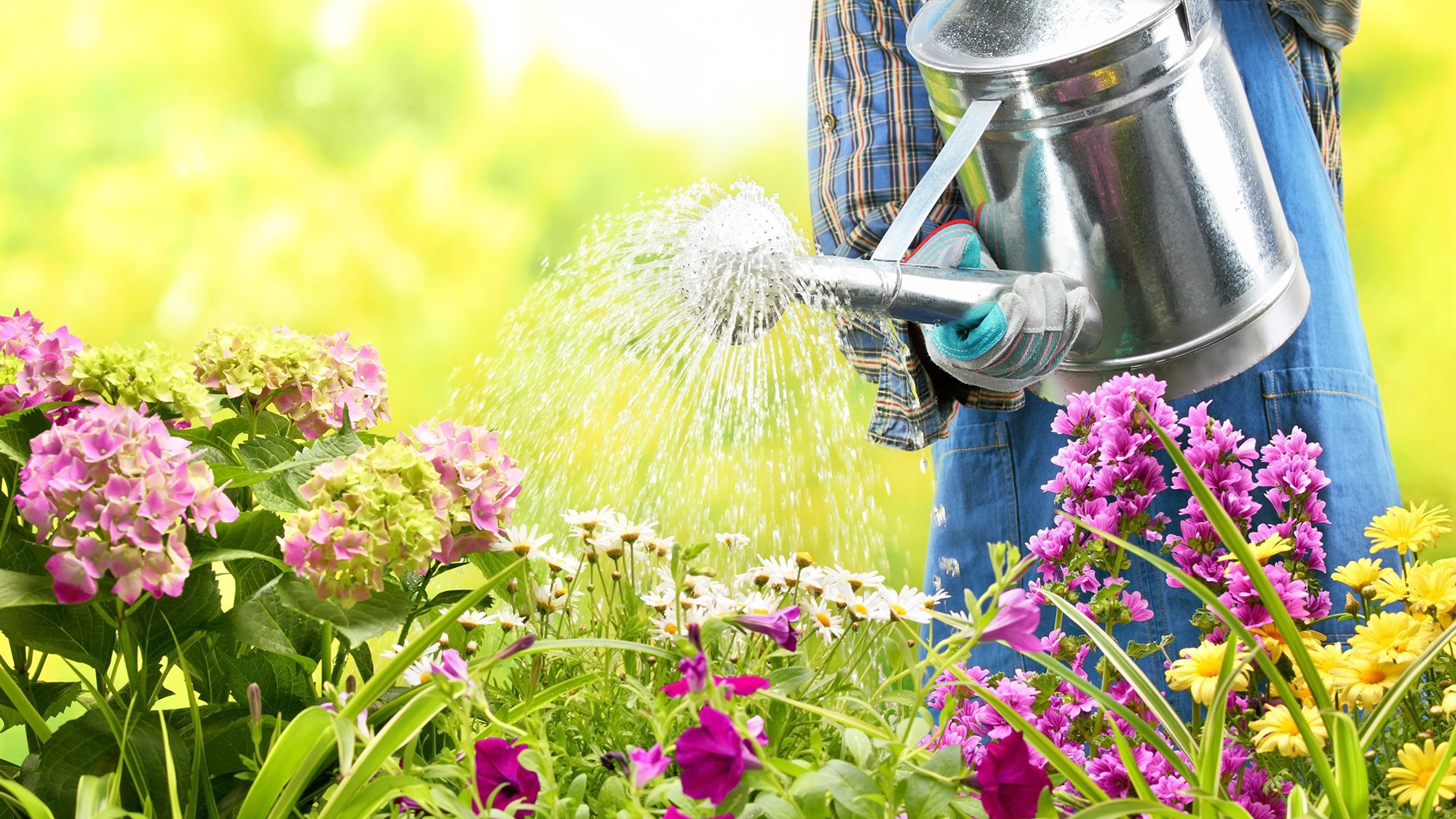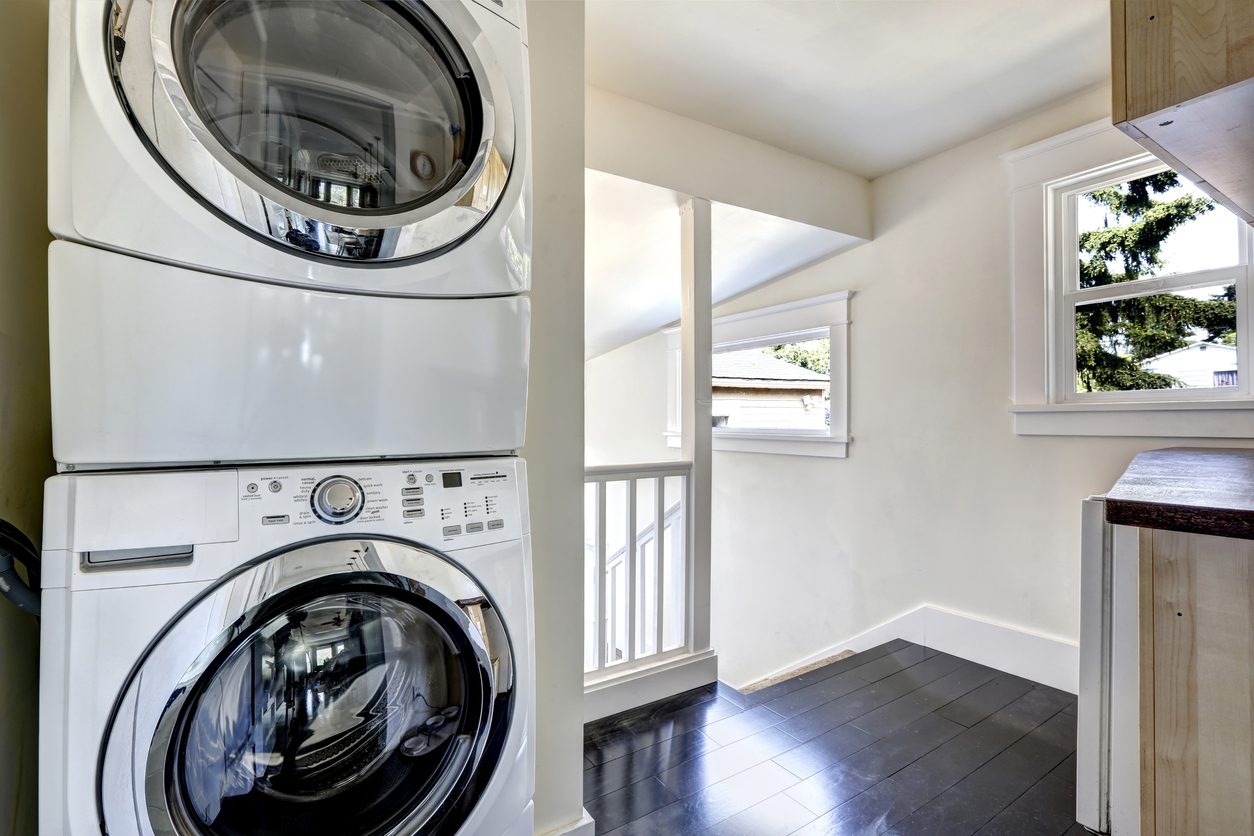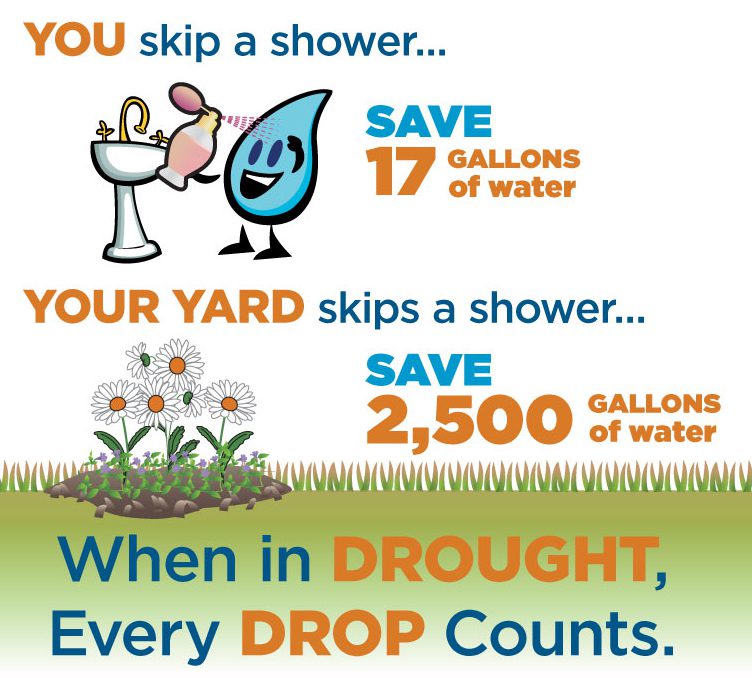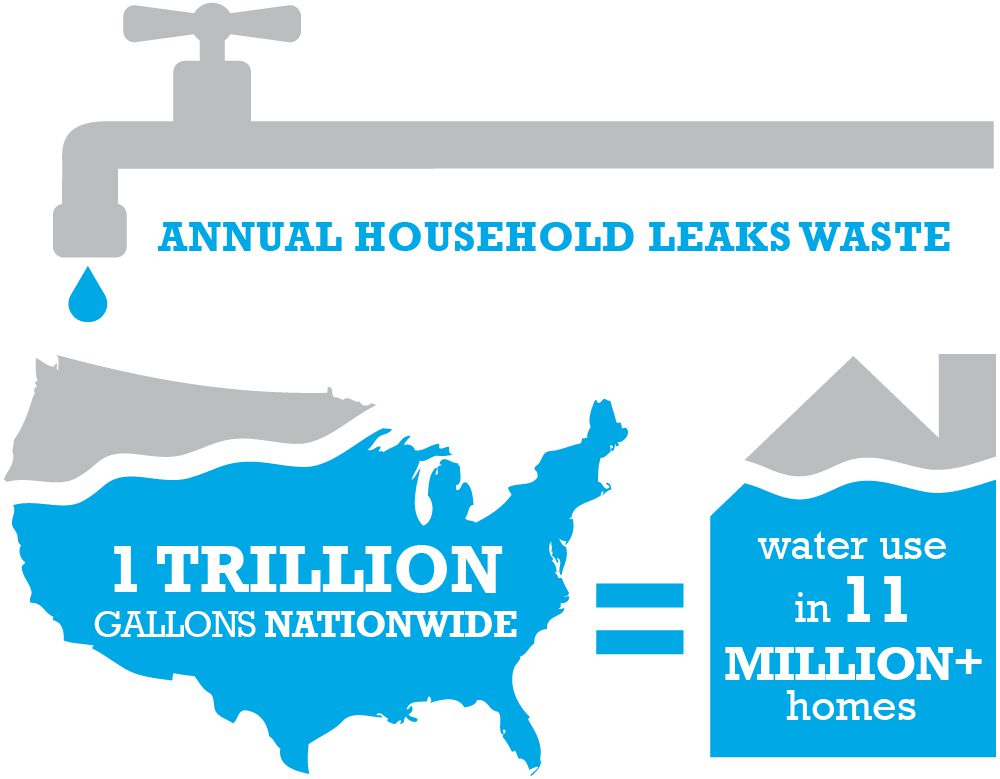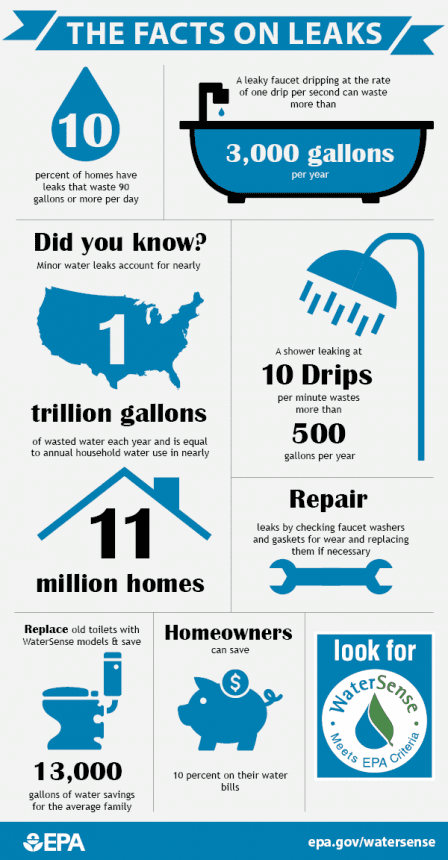Outdoor Water Saving Tips
Up to 70% of water use is outdoors. The easiest way to conserve thousands of gallons of water around your home is to reduce the water you use on your lawns and gardens.
- Don’t run water continuously when washing your car. Use a nozzle on the hose to stop the water flow between rinsings. Clean the car with a pail of soapy water.
- Use a broom, not a hose, to clean driveways and sidewalks.
- Plan before you plant – consider plant needs for moisture, sunlight, etc. in advance.
- Improve the soil structure – work organic material such as peat moss or compost into the soil to help retain water and assist in plant growth.
- Aerating your yard once a year also will help it retain water.
- Cut down on grass – grass requires up to four times as much water as other plants.
- Cut back on the amount of grass in your yard by planting shrubs or ground cover or putting in rock gardens.
- Water efficiently – use a sprinkler with a low application rate (about one-third inch per hour) and check for even coverage. Established grass only needs an inch of water each week.
- Water your lawn in the evenings or early mornings to reduce evaporation.
- When you do water, water long enough for moisture to soak down to the roots where it will do the most good.
- Make the most of mulches – three to four inches of mulch on top of the soil, especially before spring and fall rains, will reduce water needs, moderate soil temperature and inhibit weed growth.
- Choose climate friendly plants – many native plants can survive on rainwater alone, and they’re more disease and insect resistant.
- Care for what you plant – weed and prune regularly to ensure water is going where it’s needed.
Outdoor Water Saving Ideas from Water Use it Wisely
Outdoor Watering, Waterwise Gardening and Irrigation Info From WSU Extension
Indoor Water Saving Tips
- Wash only full loads in your washing machine and dishwasher.
- Don’t run water continuously when washing dishes by hand.
- Attach “low-flow” faucet aerators to faucets.
- Take short showers instead of baths. A full bathtub requires about 36 gallons of water. A five-minute shower using a low flow showerhead can use as little as 7.5 to 15 gallons.
- Install “low-flow” shower heads and toilets.
- Don’t leave the water running when brushing your teeth or shaving. With the tap running at full force, shaving takes 20 gallons of water,
teeth-brushing takes 10 and hand washing takes two. - Check for leaky faucets and toilets, and then repair them immediately. A leaky tap, dripping once per second, wastes six gallons of water a day.
100 Water Saving Tips from the Water Use it Wisely Website
Learn How Much Water Your Household is Using: Try the Water Footprint Calculator
Water Footprint CalculatorWater Saving Info From the EPA’s Water Sense Program
The Facts on Leaks:
- The average household’s leaks can account for more than 10,000 gallons of water wasted every year, or the amount of water needed to wash 270 loads of laundry.
- Household leaks can waste more than 1 trillion gallons annually nationwide. That’s equal to the annual household water use of more than 11 million homes.
- Ten percent of homes have leaks that waste 90 gallons or more per day.
- Common types of leaks found in the home include worn toilet flappers, dripping faucets, and other leaking valves. All are easily correctable.
- Fixing easily corrected household water leaks can save homeowners about 10 percent on their water bills.
- Keep your home leak-free by repairing dripping faucets, toilet flappers, and showerheads. In most cases, fixture replacement parts don’t require a major investment.
- Most common leaks can be eliminated after retrofitting a household with new WaterSense labeled fixtures and other high-efficiency appliances.
Leak Detection:
- A good method to check for leaks is to examine your winter water usage. It’s likely that a family of four has a serious leak problem if its winter water use exceeds 12,000 gallons per month.
- Check your water meter before and after a two-hour period when no water is being used. If the meter does not read exactly the same, you probably have a leak.
- One way to find out if you have a toilet leak is to place a drop of food coloring in the toilet tank. If the color shows up in the bowl within 10 minutes without flushing, you have a leak. Make sure to flush immediately after this experiment to avoid staining the tank.
Faucets and Showerheads:
- A leaky faucet that drips at the rate of one drip per second can waste more than 3,000 gallons per year. That’s the amount of water needed to take more than 180 showers!
- Leaky faucets can be fixed by checking faucet washers and gaskets for wear and replacing them if necessary. If you are replacing a faucet, look for the WaterSense label.
- A showerhead leaking at 10 drips per minute wastes more than 500 gallons per year. That’s the amount of water it takes to wash 60 loads of dishes in your dishwasher.
- Most leaky showerheads can be fixed by ensuring a tight connection using pipe tape and a wrench. If you are replacing a showerhead, look for one that has earned the WaterSense label.
Toilets:
- If your toilet is leaking, the cause is often an old, faulty toilet flapper. Over time, this inexpensive rubber part decays, or minerals build up on it. It’s usually best to replace the whole rubber flapper—a relatively easy, inexpensive do-it-yourself project that pays for itself in no time.
- If you do need to replace the entire toilet, look for a WaterSense labeled model. If the average family replaces its older, inefficient toilets with new WaterSense labeled ones, it could save 13,000 gallons per year. Retrofitting the house could save the family nearly $2,400 in water and wastewater bills over the lifetime of the toilets.
Outdoors:
- An irrigation system should be checked each spring before use to make sure it was not damaged by frost or freezing.
- An irrigation system that has a leak 1/32nd of an inch in diameter (about the thickness of a dime) can waste about 6,300 gallons of water per month.
- To ensure that your in-ground irrigation system is not leaking water, consult with a WaterSense irrigation partner who has passed a certification program focused on water efficiency; look for a WaterSense irrigation partner.
- Check your garden hose for leaks at its connection to the spigot. If it leaks while you run your hose, replace the nylon or rubber hose washer and ensure a tight connection to the spigot using pipe tape and a wrench.
